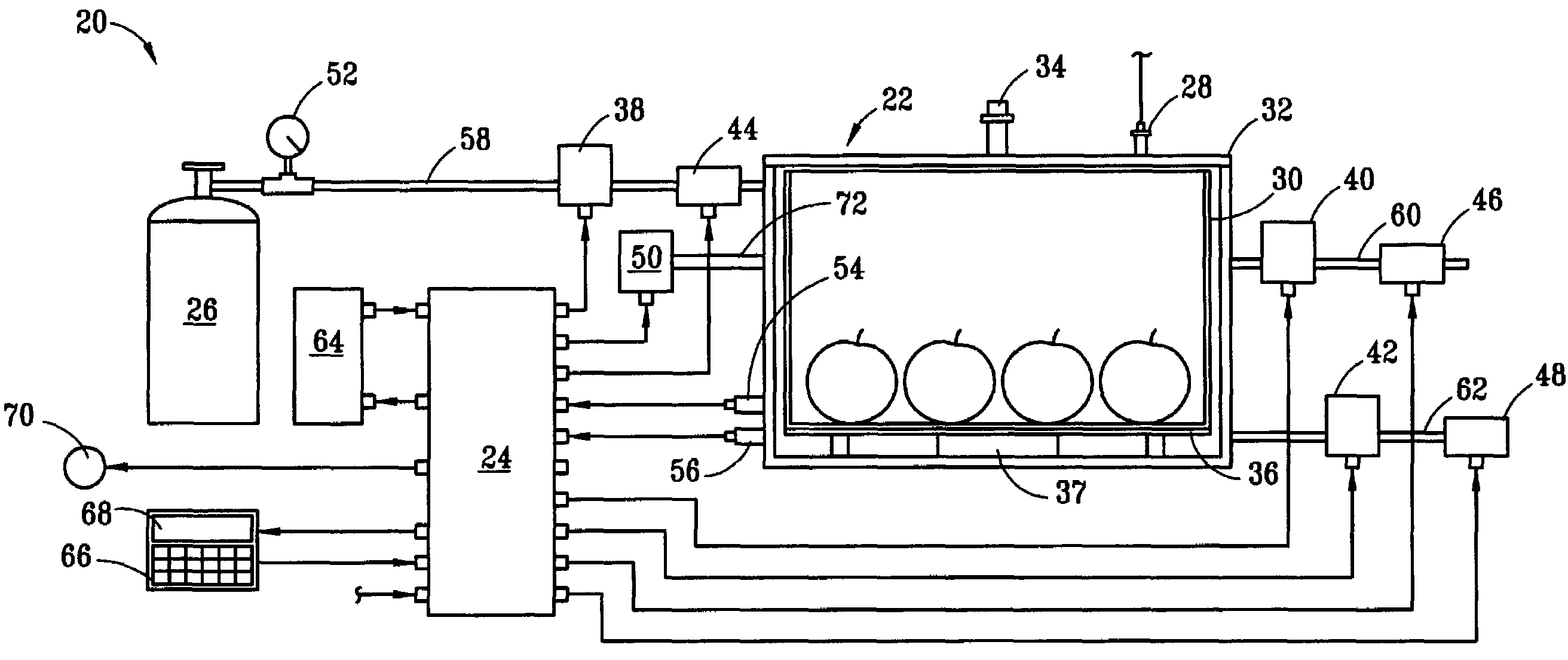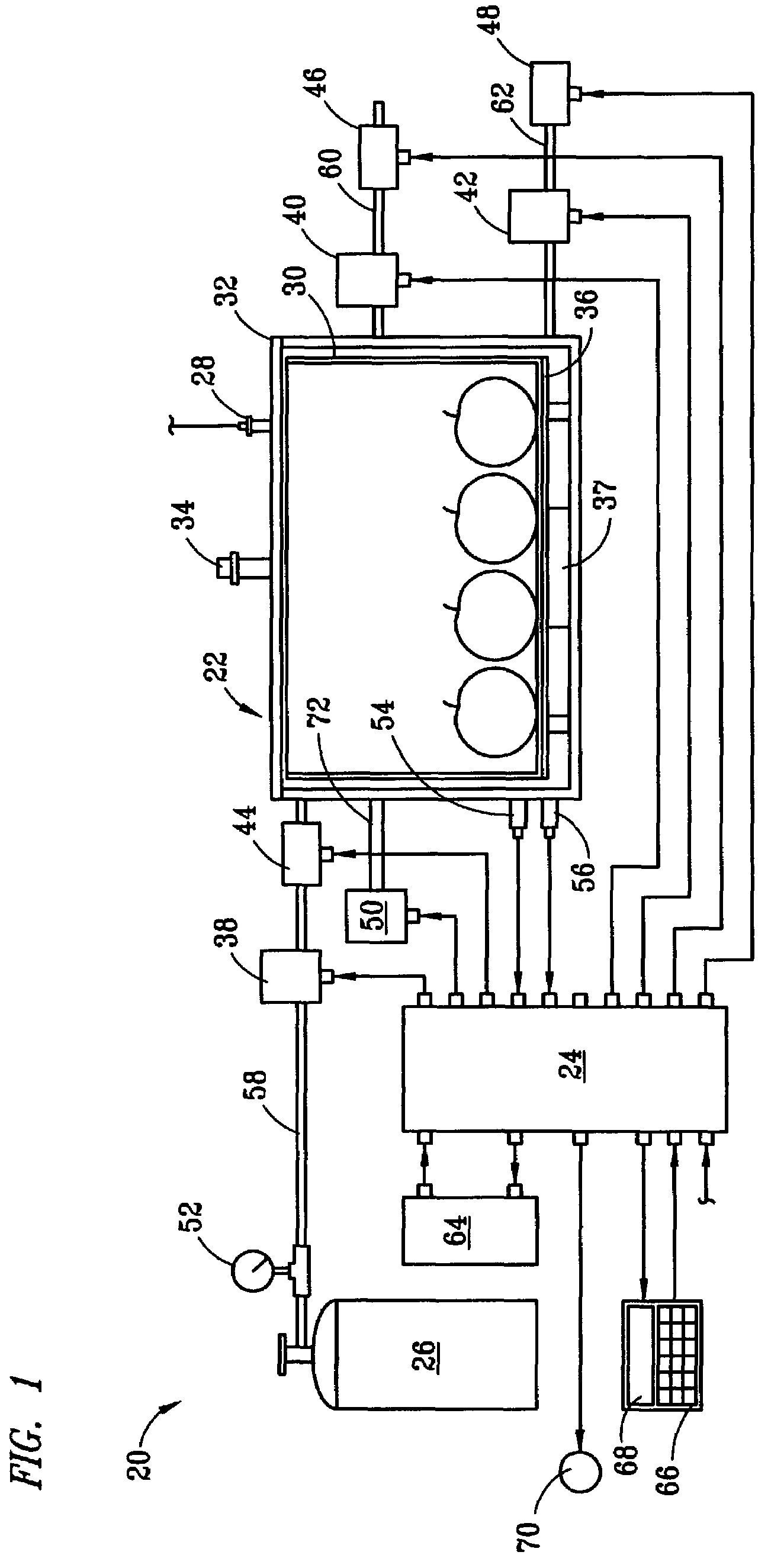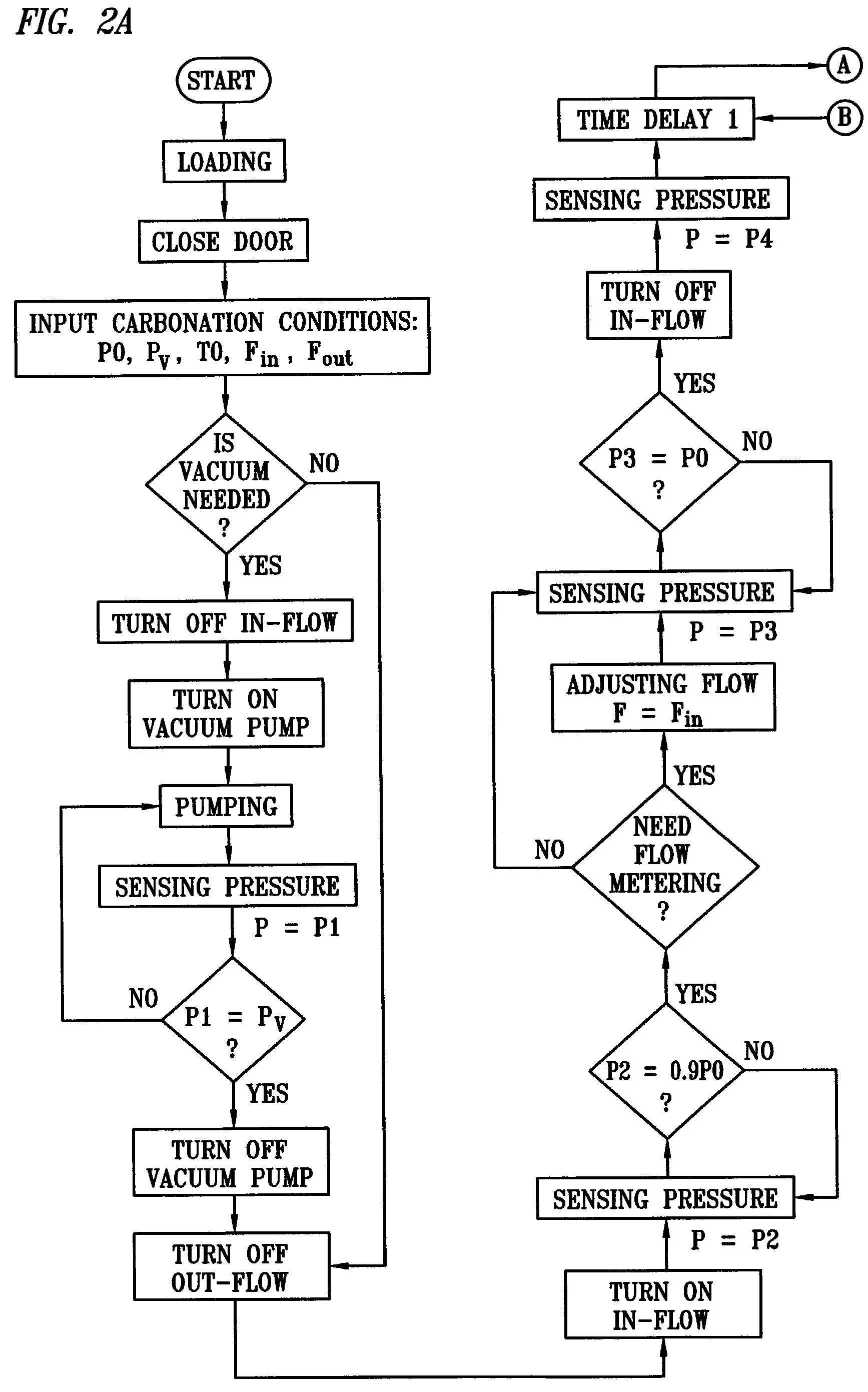Carbonation system for enhancing the flavor of fruits and vegetables
- Summary
- Abstract
- Description
- Claims
- Application Information
AI Technical Summary
Benefits of technology
Problems solved by technology
Method used
Image
Examples
first embodiment
[0070]Referring to FIG. 4, thermally insulated container 76 comprises lid 78, which seals thermally insulated container 76 during carbonation to allow for the accumulation of moderate CO2 pressures, such as about 0 psi to about 15 psi, inside thermally insulated container 76. During carbonation, thermally insulated container 76 and lid 78 must be held together by a strong hinge and lock to ensure that lid 78 does not open. The lock should be designed with a safety interlock that prevents thermally insulated container 76 from being opened until the pressure is relieved from thermally insulated container 76. Preferably, a wall of thermally insulated container 76 has pressure relief device 80 therethrough; however, pressure relief device 80 could be located anywhere on the body of thermally insulated container 76. Pressure relief device 80 is similar to pressure relief device 34 of the first embodiment and releases excess carbonation pressure in thermally insulated container 76, ensuri...
third embodiment
[0081]the invention also discloses a combination carbonation system and cooler 104. Referring to FIG. 10, thermally insulated container 106 may have the appearance and equivalent size of a standard thermally insulated container (i.e. cooler or ice chest) found in the market. Thermally insulated container 106 comprises lid 108, which seals thermally insulated container 106 during carbonation to allow for the accumulation of moderate CO2 pressures, such as about 0 psi to about 15 psi, inside thermally insulated container 106. During carbonation, thermally insulated container 106 and lid 108 must be held together by a strong hinge and lock to ensure that lid 108 does not open. The lock should be designed with a safety interlock that prevents thermally insulated container 106 from being opened until the pressure is relieved from thermally insulated container 106.
[0082]Microprocessor 110 is desirably located within the outside wall of thermally insulated container 106. Microprocessor 110...
PUM
 Login to View More
Login to View More Abstract
Description
Claims
Application Information
 Login to View More
Login to View More - R&D
- Intellectual Property
- Life Sciences
- Materials
- Tech Scout
- Unparalleled Data Quality
- Higher Quality Content
- 60% Fewer Hallucinations
Browse by: Latest US Patents, China's latest patents, Technical Efficacy Thesaurus, Application Domain, Technology Topic, Popular Technical Reports.
© 2025 PatSnap. All rights reserved.Legal|Privacy policy|Modern Slavery Act Transparency Statement|Sitemap|About US| Contact US: help@patsnap.com



